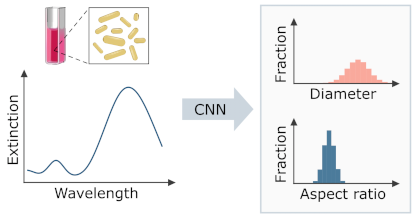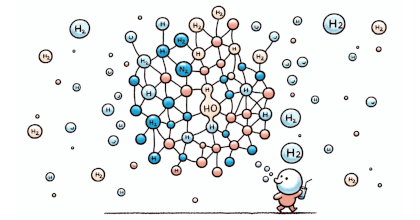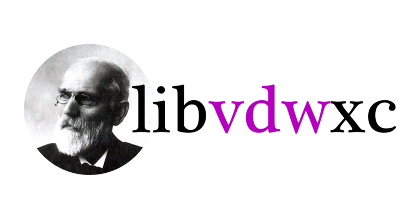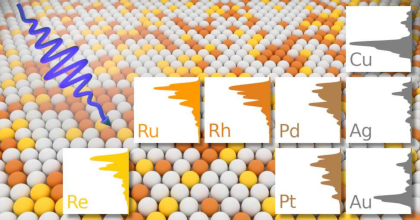Machine Learning-Based Interpretation of Optical Properties of Colloidal Gold with Convolutional Neural Networks
F. Bilén,
P. Ekborg-Tanner,
A. Balzano,
M. Ughetto,
R. R. da Silva,
H. Schomaker,
P. Erhart,
K. Moth-Poulsen,
and
R. Bordes
The Journal of Physical Chemistry C 128, 13909
(2024)
doi: 10.1021/acs.jpcc.4c02971
Download PDF

Gold nanoparticles are used in a range of applications, but their properties depend on their shape, size, and polydispersity. A quick, easy, and accurate characterization of the particles is therefore of high importance, especially in flow synthesis settings where continuous monitoring of the characteristics is desired. Our hypothesis was that convolutional neural networks can be used to extract detailed information about structural parameters of gold nanoparticles from their UV-vis spectra, and we have shown that this is possible by predicting size distributions from in silico UV-vis spectra for colloidal gold with high accuracy. Here this was done for both spherical and rod-shaped gold nanoparticles. We also show that the addition of noise makes the prediction of diameter polydispersity more challenging, but the average diameter, and for rods also aspect ratio distribution, can be accurately predicted even with the highest evaluated level of noise. The model structure is promising and worthy of implementation to enable predictions beyond in silico generated spectra. The model, for instance, can find application in flow synthesis settings to create a machine learning-driven feedback loop for automated synthesis.



